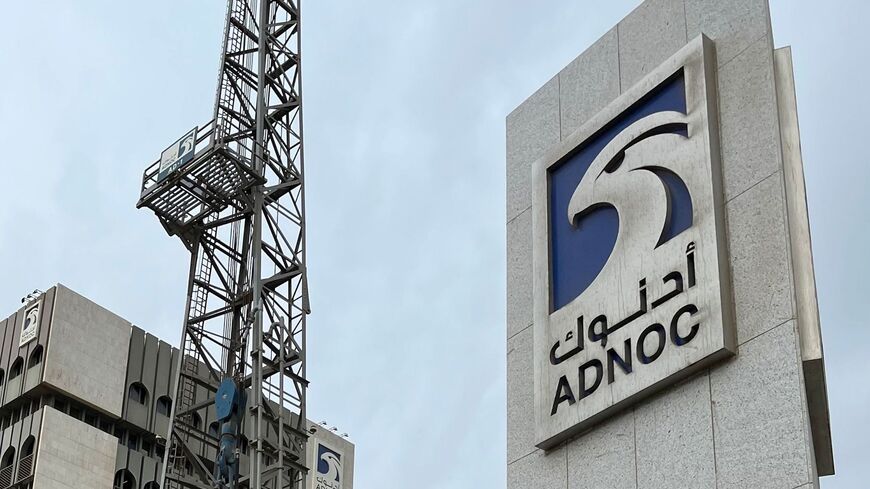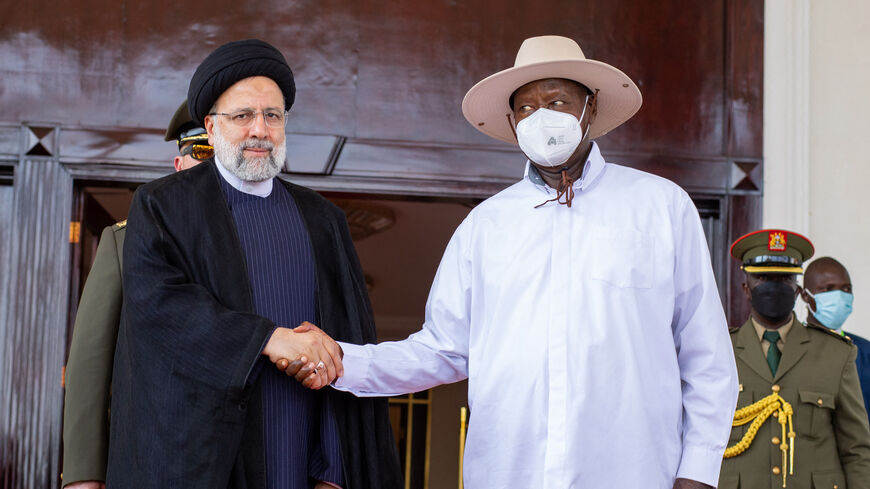Oman bets on tourism to protect itself against global shocks
Al-Monitor Pro Members
Tamara Juburi
Researcher and analyst focusing on the Middle East
April 7, 2023
As part of an effort to revamp its tourism industry, Oman announced last week that it was launching visa free travel for nationals from 103 countries. This move is part of Oman’s wider effort to increase its global standing as a hub for international tourism, which is a central component of its plan to diversify its economy. In doing so, the sultanate aims to create more than 500,000 jobs and earn the country $22.5 billion in tourism revenue by 2040. However, effectively distinguishing itself from its neighbors, such as the United Arab Emirates (UAE) and Saudi Arabia, and successfully showcasing what it has to offer on the international stage will be key if the nation is to meet its goals.
- Oman’s Vision 2040 lays out the country’s development trajectory for the 2021-2040 period, with a focus on three key areas: people and society, economy and development, and governance and institutional performance. Having initially been prepared under the rule of the late Sultan Qaboos bin Said, Oman’s Vision 2040 is now being implemented under the directive of the current Sultan, Haitham bin Tariq.
- A key component of the plan consists in solidifying Oman’s reputation as a stable country in the wider Middle Eastern region, and leveraging this perception to attract 11.7 million international and domestic tourists by 2040. According to the National Centre for Statistics and Information, the total number of visitors to Oman in 2022 was 2.9 million, with most visitors coming from the UAE, followed by Yemen and Germany. Based on growth over the last years, revenue from tourism is projected to reach $471 million in 2023.
- The move to grow tourism is part of a wider trend in the GCC: to move away from oil and gas dependence by diversifying industries, strengthening young populations’ prospects for the future and improving governance mechanisms. Betting on tourism is a goal that Oman shares with other neighboring countries, all of whom are currently competing to attract larger numbers of foreign visitors and grow the proportion of revenue brought in by travelers.
- For Oman, the specific goal is to increase the contribution of tourism to GDP from 2.4% in 2021 to 5% in 2030 and 10% in 2040. In order to achieve this, the sultanate is seeking to boost private investment, which is intended to fund 80% of the projects needed to support its anticipated tourism boom; the other 20% required to develop the tourism industry is expected to come from public funds.
- In August 2022, Oman's Ministry of Heritage and Tourism announced that of the total $7.8 billion investment needed by the end of 2023, almost $4.5 billion had been secured. Such funds are expected to be used to develop 14 tourism clusters across the nation, increase the number of luxury hotels, improve connectivity and logistics, and showcase its five UNESCO World Heritage sites.
- One area in which Oman can differentiate itself from other tourist hot spots in the region is sustainable tourism, a fast-growing market within the tourism industry that is expected to increase by almost $336 billion globally by 2027. This is a significant opportunity for Oman since Sustainable Tourism Euromonitor International ranked it first in the GCC in its Sustainable Travel Index 2020, as well as among the top countries in terms of economic sustainability.
- While Oman has opportunities such as pioneering sustainable tourism in the Gulf, it also faces unique challenges in its quest to become a tourist hotspot within the GCC by 2040. One concern is its vulnerability to oil prices that fluctuate as a result of global events. Its reliance on heavy crude oil exports amounts to 30% of the nation’s GDP and 70% of the government’s annual budget, which is primarily comprised of taxation and joint ownership of oil fields.
Scenario 1: Oman’s vulnerability to global events will hinder its ability to meet 2040 goals
Oman’s heavy reliance on oil exports, coupled with its relatively small economy, make it more vulnerable to external shocks than many of the larger economies surrounding it, such as the UAE and Saudi Arabia. Based on this, changes in global prices that occur as a result of unforeseen circumstances — such as the war on Ukraine — can severely impact Oman’s financial strength and therefore its ability to meet the targets set out in the strategic plan. The 2020 fall in global oil prices, for example, strained Oman’s GDP, as well as its fiscal and current account balances. During this period, more than 26% of the nation’s GDP came from gas and oil sectors, contributing 75% of government revenues.
Another testament to this vulnerability was the COVID-19 pandemic, in which Oman was one of the hardest hit nations with tourist numbers dropping by more than 80% between 2019 and 2021. Despite current forecasts supporting a promising recovery — including a 348% increase in arrivals in 2022 compared to the previous year — the effects of the tourism slump that occurred throughout 2020 and much of 2021 can still delay Oman’s ability to meet its tourism targets in two ways. First, the slump in numbers throughout this period can slow progress toward reaching the goal of having 11.7 million visitors by 2040. Second, such economic shocks impact the Omani government’s liquidity, which is needed to fund the 20% of the tourism budget that is expected to come from public funds. Given the turbulence of the world economy today, Oman must act quickly to diversify its economy and make it more sustainable in the face of external global events.
Scenario 2: Oman will be unable to compete with its GCC neighbors for a higher proportion of foreign arrivals
Even if global events do not threaten the nation’s ability to meet its goals over the next decades, Oman will still face the challenge of competing with its GCC neighbors. Qatar’s 2022 World Cup is expected to continue having a significant impact in terms of making international travelers more willing to visit the region. However, with other GCC countries also seeking to boost their tourism industries, Oman will have to compete with its neighbors to convince foreigners that it is the best option. The UAE — which currently leads the region in terms of international visitors — will likely continue dominating in this space for the foreseeable future.
Furthermore, if it is to strengthen regional tourism, Oman will have to overtake Bahrain, which currently absorbs more than 40% of tourists coming from other GCC countries. Given that the World Tourism Organization found that GCC travelers spend 6.5 times more than tourists from other parts of the world, Oman should prioritize domestic and regional travel in order to increase the revenue generated from the tourism industry in the short- to mid-term. Doing so can go some way in funding its plans to increase the infrastructure needed to attract larger numbers of international travelers in the long-term.
Oman will likely reach its 2040 targets by continuing to mitigate the risks of global events and successfully differentiating its tourism sector from competitors in the region. Its ability to overcome and recover from global events such as the pandemic and oil price turbulence show that it has developed some of the necessary tools to mitigate such risks. Despite the vulnerability that comes with being a smaller GCC country, this also brings some opportunities that Oman can use to its advantage when competing with the rest of the GCC. First, it is easier to harness a spirit of collaboration among its 4.6 million population. Oman’s strategy has received buy-in from its people, many of whom contributed to its design since Vision 2040 took on a participatory approach and received input from civil society, private sectors, academic institutions, students and expats. This approach facilitates the ability of private and public sectors to work together toward common objectives. One such goal is to have 30 public entities and 50 private companies jointly implement the strategy, including the Ministry of Commerce and Industry and Oman Air.
Another advantage is that Oman can more easily pivot its strategy in the face of unforeseen circumstances and cultivate a more coherent national brand. For example, Oman is leading the way in terms of sustainable tourism in the region. According to Statista, more than 80% of travelers surveyed in 2022 believed sustainable travel to be important, which gives Oman an opportunity to excel and distinguish itself from surrounding countries in this regard. Some work has already been done to boost this sub-sector: Oman’s Environment Agency has offered private companies the opportunity to invest in natural reserves for ecotourism projects in an effort to support local economies that research and preserve nature. Such efforts contribute to shaping global perceptions of Oman as a stable and dependable country within the wider GCC region. This reputation, coupled with its well-positioned diplomatic ties internationally, make Oman an attractive destination for foreign investment as well as international travel.
Tamara Juburi is a researcher and analyst focusing on the Middle East. Her particular areas of interest include entrepreneurship in the GCC, the evolving nature of the relationship between the EU and the region, and how global diplomacy translates into local business and trade opportunities.
We're glad you're interested in this memo.
Memos are one of several features available only to PRO Expert members. Become a member to read the full memos and get access to all exclusive PRO content.

Already a Member? Sign in
The Middle East's Best Newsletters
Join over 50,000 readers who access our journalists dedicated newsletters, covering the top political, security, business and tech issues across the region each week.
Delivered straight to your inbox.
Free
What's included:
Free newsletters available:
- The Takeaway & Week in Review
- Middle East Minute (AM)
- Daily Briefing (PM)
- Business & Tech Briefing
- Security Briefing
- Gulf Briefing
- Israel Briefing
- Palestine Briefing
- Turkey Briefing
- Iraq Briefing
Premium Membership
Join the Middle East's most notable experts for premium memos, trend reports, live video Q&A, and intimate in-person events, each detailing exclusive insights on business and geopolitical trends shaping the region.
$25.00 / month
billed annually
$31.00 / month
billed monthly
What's included:
Memos - premium analytical writing: actionable insights on markets and geopolitics.
Live Video Q&A - Hear from our top journalists and regional experts.
Special Events - Intimate in-person events with business & political VIPs.
Trend Reports - Deep dive analysis on market updates.
We also offer team plans. Please send an email to pro.support@al-monitor.com and we'll onboard your team.
Already a Member? Sign in






